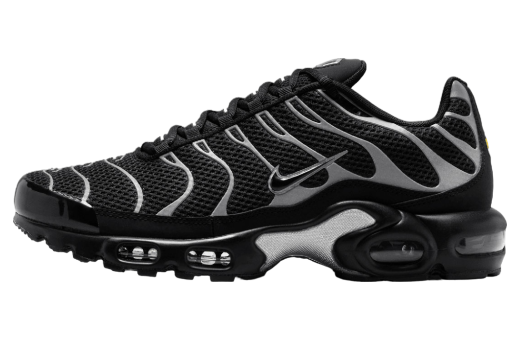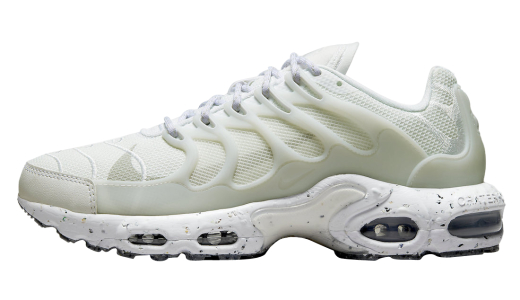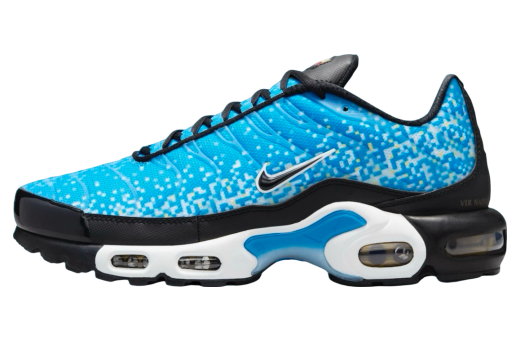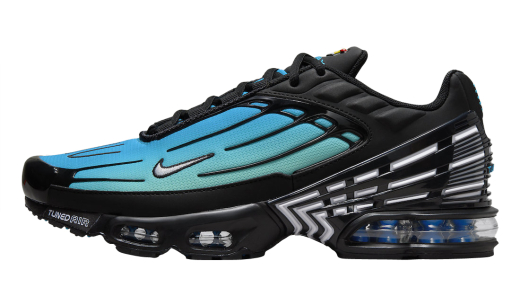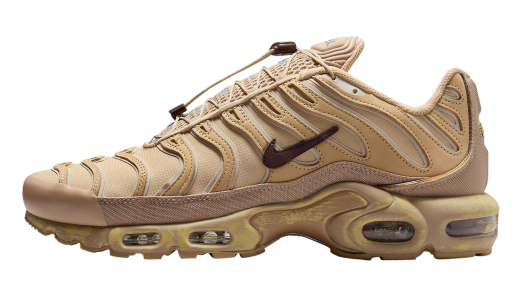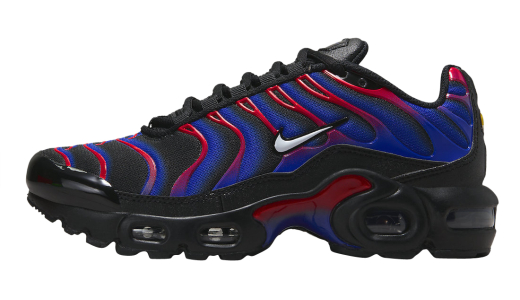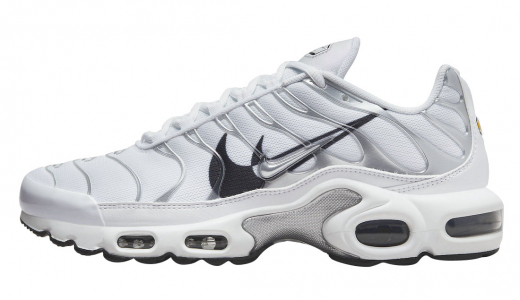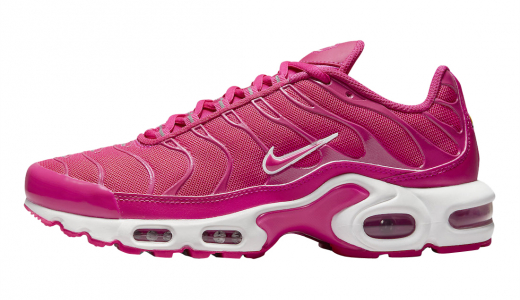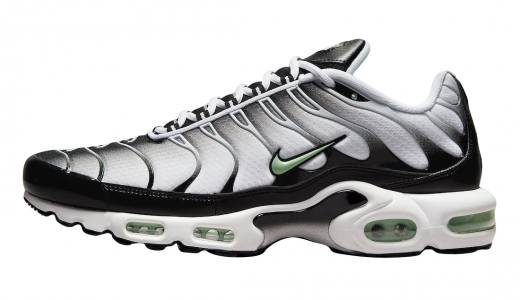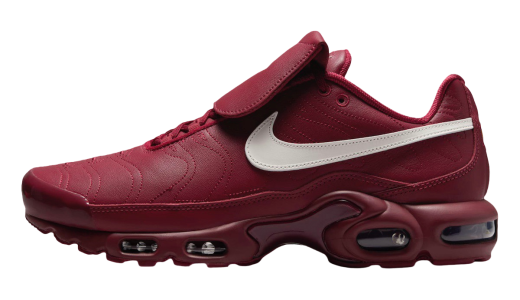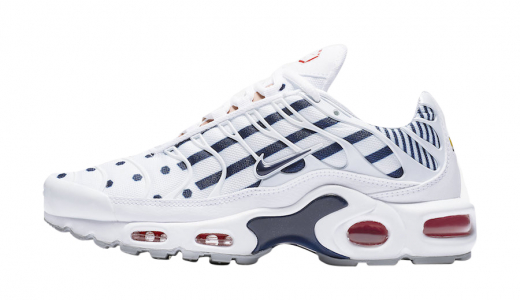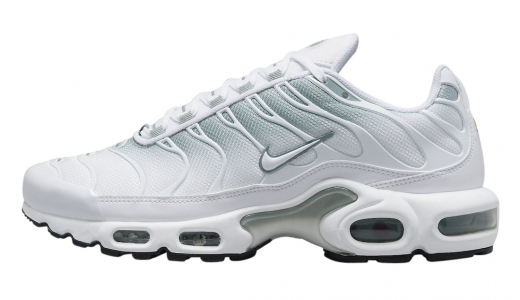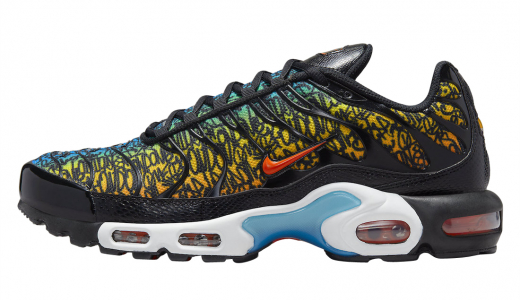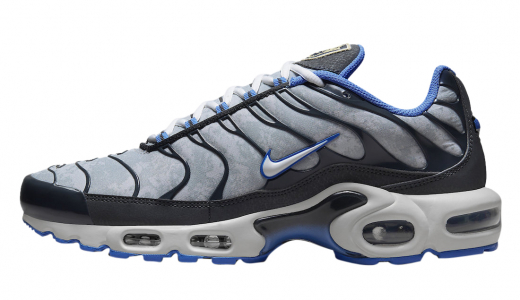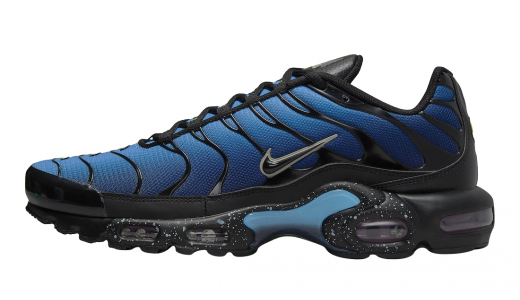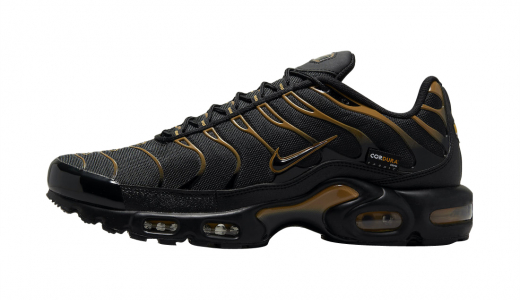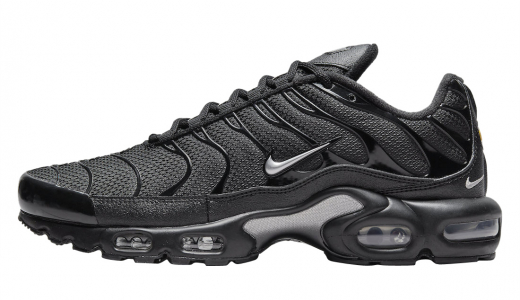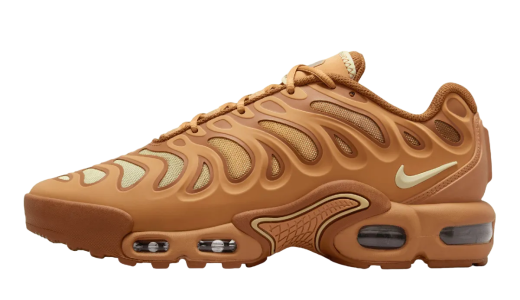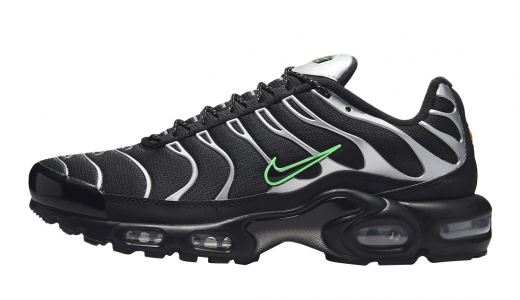Nike Air Max Plus
The Nike Air Max Plus, first introduced in 1998, became an iconic silhouette in the sneaker world. Developed by Nike designer Sean McDowell, the sneaker was inspired by Florida's coastal sunsets and palm trees, which can be seen in its distinctive and aggressive design. One of its most defining features is the "Tuned Air" technology, which provides enhanced stability and cushioning. This advancement in sneaker technology set the Air Max Plus apart from its predecessors, making it a popular choice among athletes and sneaker enthusiasts alike. The bold, wave-like lines on the upper, paired with striking colorways, made it an instant classic that resonated with a diverse audience.
Over the years, the Nike Air Max Plus has seen numerous iterations and collaborations, continually keeping it relevant in the ever-evolving world of sneaker culture. Limited-edition releases and unique color combinations have ensured its place as a must-have in any serious sneaker collection. The shoe's combination of functional innovation and daring aesthetics has allowed it to cross from athletic wear to street fashion effortlessly. By continuing to reimagine the Air Max Plus with fresh designs and keeping up with contemporary trends, Nike has maintained the sneaker's enduring appeal for over two decades.
History of Nike Air Max Plus
The History of the Nike Air Max Plus
The story of the Nike Air Max Plus, also known as the Nike TN, is a fascinating journey of innovation, design excellence, and cultural impact that spans several decades. This sneaker, with its distinctive look and groundbreaking technology, has cemented itself as a key player in the realm of athletic footwear, streetwear, and sneaker culture. To truly appreciate the Nike Air Max Plus, one must explore its origins, evolution, and enduring popularity.
Origins and Early Development
The Nike Air Max Plus was first released in 1998, a pivotal year for sneaker design. The mid to late 1990s were a time of rapid technological advancement and bold experimentation within the sneaker industry. This era saw companies like Nike pushing the boundaries of what athletic footwear could be, both in terms of performance and aesthetics.
The design of the Air Max Plus is credited to Sean McDowell, a relatively new and young designer at Nike at the time. McDowell drew his inspiration from nature, specifically the palm trees and sunsets of Florida. This influence is evident in the shoe’s striking upper, which features wavy, gradient lines designed to mimic the texture and appearance of palm fronds and the dynamic hues of a sunset.
Another key design element of the Air Max Plus is its visible air cushioning technology, a hallmark of Nike’s Air Max line. The Air Max Plus introduced the Tuned Air system, denoted by the “TN” branding. Tuned Air incorporated specially engineered pods within the midsole to provide tailored cushioning and stability. This system aimed to give runners a more responsive and supportive experience.
Innovation and Technology
What truly set the Air Max Plus apart from its predecessors and contemporaries was its Tuned Air technology. This innovation was designed to offer a unique and highly effective form of cushioning that adapted to the wearer’s footstrike, providing varying levels of support and responsiveness. Tuned Air operates on a principle of utilizing hemispheres of air pillows that support key points of contact within the foot’s mechanics.
The technological advances in the Air Max Plus were complemented by Nike’s use of cutting-edge materials and construction techniques. The shoe’s upper was created using synthetic materials that were both lightweight and durable. These materials allowed for the bold colorways and designs that became a signature of the Air Max Plus line.
The Air Max Plus also featured a sturdy yet flexible sole, designed to accommodate the natural movement of the foot while providing excellent traction and durability. The outsole utilized a unique pattern that offered great grip on a variety of surfaces, making the shoe suitable for both running and everyday wear.
Cultural Impact and Popularity
Upon its release, the Nike Air Max Plus garnered immediate attention and acclaim. Its unique design and innovative technology resonated with athletes, sneaker enthusiasts, and casual wearers alike. The shoe was particularly popular in Europe and Australia, where it became a cultural icon in its own right.
In the UK, the Air Max Plus earned the nickname “TN” due to the prominent Tuned Air branding. It became associated with various subcultures, particularly within urban and streetwear communities. The shoe’s distinctive look and association with athletic prowess and street credibility made it a highly sought-after item.
Australia saw a similar phenomenon, with the Air Max Plus becoming an integral part of street fashion. The shoe’s bold design and vibrant colorways made it a favorite among young people, and it was often seen as a symbol of status and style.
The sneaker’s influence extended beyond fashion and subculture; it also found a place in music and entertainment. Various artists and celebrities adopted the Air Max Plus, incorporating it into their personal style and public personas. This further solidified the shoe’s status as a cultural icon.
Evolution and Variations
Over the years, Nike has continued to capitalize on the popularity of the Air Max Plus by releasing numerous variations, colorways, and special editions. These iterations have kept the shoe relevant and fresh in the ever-evolving sneaker landscape.
Some notable variations include the Air Max Plus 2, which introduced new design elements while retaining the core features that made the original so popular. The Air Max Plus 3 further pushed the boundaries with even bolder designs and advanced materials.
Nike also experimented with hybrid models, combining the Air Max Plus with other popular silhouettes. Examples include the Air VaporMax Plus, which merges the upper of the Air Max Plus with the sole unit of the Air VaporMax, and the Air Max Plus OG, which pays homage to the original colorways and design elements.
Collaborations have also played a significant role in the ongoing success of the Air Max Plus. Nike has partnered with various designers, brands, and artists to create limited edition versions of the shoe. These collaborations often generate considerable hype and demand, further cementing the Air Max Plus’s status as a coveted sneaker.
The Air Max Plus in the Modern Era
The Nike Air Max Plus continues to be a staple in the world of sneakers and streetwear. Its enduring popularity can be attributed to several factors, including its unique design, innovative technology, and cultural significance.
In recent years, the sneaker industry has seen a resurgence of interest in retro and vintage models. This trend has benefited the Air Max Plus, as it is often celebrated as a classic and timeless design. Nike has capitalized on this nostalgia by re-releasing original colorways and introducing new ones that pay homage to the shoe’s heritage.
The advent of social media and online sneaker culture has also played a significant role in maintaining the relevance of the Air Max Plus. Platforms like Instagram, Twitter, and YouTube have given sneaker enthusiasts a global stage to showcase their collections and share their passion for footwear. The Air Max Plus is frequently featured in these spaces, demonstrating its lasting appeal and influence.
The Nike Air Max Plus and Sustainability
In recent years, the conversation around sustainability has become increasingly important within the sneaker industry. Nike, as a leading global brand, has taken steps to address environmental concerns and reduce its carbon footprint. This has included exploring sustainable materials and manufacturing processes for its products, including the Air Max Plus.
Nike’s Move to Zero initiative aims to achieve zero carbon and zero waste across the company’s operations. As part of this initiative, Nike has introduced more sustainable versions of its popular models, including the Air Max Plus. These sustainable iterations utilize recycled materials and environmentally friendly production methods, allowing fans of the shoe to enjoy it while also supporting a more sustainable future.
Conclusion
The Nike Air Max Plus is more than just a sneaker; it's a symbol of innovation, style, and cultural significance. From its origins in 1998, inspired by the natural beauty of Florida, to its status as a global icon in sneaker culture, the Air Max Plus has carved out a unique place in the world of footwear. Its distinctive design, groundbreaking Tuned Air technology, and enduring popularity make it a true classic that continues to captivate sneaker enthusiasts around the world.
As the sneaker industry continues to evolve, the Nike Air Max Plus remains a shining example of how a single design can transcend its original purpose and become a lasting cultural phenomenon. Whether through new colorways, collaborations, or sustainable innovations, the legacy of the Air Max Plus is sure to endure for many years to come.
